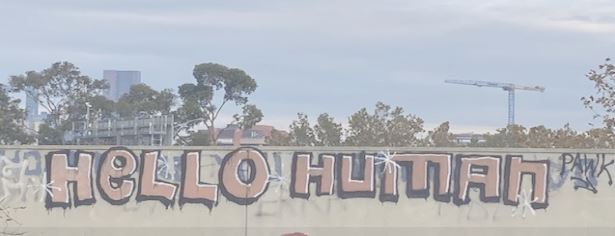
This article written by Cultural Infusion’s Researcher and Content Writer, Catherine McCredie, discusses diversity and the importance of intercultural unity and understanding. The poem ‘Walls’ is explored in the light of the upcoming World Day for Cultural Diversity for Dialogue and Development (also known as Diversity Day).
Τείχη
Χωρίς περίσκεψιν, χωρίς λύπην, χωρίς αιδώ
μεγάλα κι υψηλά τριγύρω μου έκτισαν τείχη.
Και κάθομαι και απελπίζομαι τώρα εδώ.
Άλλο δεν σκέπτομαι: τον νουν μου τρώγει αυτή η τύχη·
διότι πράγματα πολλά έξω να κάμω είχον.
Α όταν έκτιζαν τα τείχη πώς να μην προσέξω.
Αλλά δεν άκουσα ποτέ κρότον κτιστών ή ήχον.
Ανεπαισθήτως μ’ έκλεισαν από τον κόσμον έξω.
Κωνσταντίνος Καβάφης, 1896
21 May is World Day for Cultural Diversity for Dialogue and Development. This is an opportunity for Cultural Infusion to take stock of our position as global leaders in the Diversity, Equity and Inclusion (DEI) space, and to imagine the future.
Diversity Day, as this day is commonly called, was created by the United Nations in 2002, following UNESCO’s adoption of the 2001 Universal Declaration on Cultural Diversity.
This year we are choosing to look ‘beyond the walls of diversity’, because we know that, for many reasons, people are sick of hearing about ‘diversity’.
In the twenty years since the creation of Diversity Day, the pace and drama of our collective human experience has been relentless. The global population has grown from 6.3 billion to 7.8 billion increasingly urbanised people. Many of us are exhausted.
Platforming marginalised and underrepresented people has always been part of Cultural Infusion’s purpose. Meantime, technology has invented ever more efficient (and addictive) ways for people to connect online, with social media giving people more ways to tell their own stories and inform a mainstream audience about historical and current events that were not widely known or understood. More people now have more insight into many of the inequitable structures that persist in our societies and this is slowly leading to better representation in every sphere. But some of the biggest new technology platforms encourage polarisation, driving people into extreme ideological positions that create social unrest up to and including acts of terror.
This is happening at a time when we need respectful cooperation more than ever as we face the environmental consequences of over-industrialisation and, in nations like Australia, colonisation, in the form of disasters such as destruction of cultures and peoples, wildfires, nuclear accidents, oil spills and pandemics.
The walls around us today
Greek poet Constantine Cavafy’s (1863–1933) poem ‘Walls’ could be speaking for many people who have felt the negative effects of lockdown since the 2019 emergence of COVID-19.
Without consideration, without pity, without shame
they have built great and high walls around me.
And now I sit here and despair.
I think of nothing else: this fate gnaws at my mind;
Cavafy’s personal insight into how the walls have closed around his life without warning indicates some form of abuse of power. The poem further echoes the way his freedom was taken away ‘without consideration’ or second thought.
for I had many things to do outside.
Ah why did I not pay attention when they were building the walls.
Worse than the fact that these walls exist is the knowledge that we weren’t paying attention as they were built, giving way to a pervasive sense of helplessness.
The walls create an ‘Us vs Them’ situation: we/they whose freedoms are restricted and they/we who build the walls. It is the ‘Us vs Them’ situation that many people in our societies feel acutely.
But I never heard any noise or sound of builders.
Imperceptibly they shut me from the outside world.
What ‘great and high’ walls are built soundlessly and imperceptibly? In this final stanza, Cavafy reveals that these walls are conceptual rather than physical.
These walls describe the political and social divisions of today’s world that leave many people feeling angry, helpless and isolated.
How did we get here?
Social media keeps us in touch with one another and when used well can be a terrific vehicle for cross-cultural communication. But collectively we are using social media in a way that imperceptibly solidifies the conceptual walls around us. As everyday users, don’t we all need to pay more attention to these conceptual walls?
As confining and tormenting as physical lockdowns can be, the conceptual and virtual constructs we collectively build can be even more so. Notions such as race that were shamefully validated by influential scientists from the 1600s to as late as 1950 and have since been debunked nevertheless persist and are given new life in pockets of the internet, fuelled by social media’s polarising algorithms that encourage further division and othering, creating virtual fortresses for extreme opinions that pit groups of humans against each other.
The coronavirus pandemic forced many people to listen to one another. You could see across most social media platforms many people speaking out and discussing subjects that could be considered uncomfortable, such as race and gender. Inequality became the topic of discussion across the world. This was evident in the Black Lives Matter, Me Too and Stop Asian Hate movements.
Learning from diverse cultures and communities, embracing our differences and appreciating our similarities is vital because discrimination is a result of fear and lack of understanding. As humans, we share the same existential concerns: the desire to understand why we were born and to know what happens after we die. Every human culture tackles these big questions. We have a huge amount to learn from each other, and countless ways to support each other to bear the trials and enjoy the bounties of our brief lives in relationships based on equality rather than one self-aggrandising culture or group or person dominating and exploiting another, and we have access to more tools than ever before to help us do so.
Diversity Day has the potential to open the doors for more dialogue about diversity and cultures and fundamentally educate and create better understanding among people from all different backgrounds.
At Cultural Infusion we actively work to bring down the walls between people for our collective freedom and safety. We do this by empowering diverse cultural heritages through appropriate representation, as with our National Schools Program and our Living Culture Program, and through our diversity-mapping knowledge tool, Diversity Atlas.
We believe that ‘confluence is the lifeblood of culture’. Without divisive walls we can receive the free flow of dynamic culture that is our birthright, the clear river that nourishes us on every level. Any culture that refuses change is stagnant. This pertains to each layer of human society, right down to the individual.
This Diversity Day, let’s take the conversation beyond diversity and question everything we – every one of us humans – do, from the language we use to the interactions we have every day and the assumptions we may be carrying, and when called for adjust these. Let’s open more windows and doors and keep communicating. Because wherever consent is established between an ‘Us’ and a ‘Them’ we can walk through walls.
Walls
Without consideration, without pity, without shame
they have built great and high walls around me.
And now I sit here and despair.
I think of nothing else: this fate gnaws at my mind;
for I had many things to do outside.
Ah why did I not pay attention when they were building the walls.
But I never heard any noise or sound of builders.
Imperceptibly they shut me from the outside world.
Constantine Cavafy (1863–1933)
Thank you to our Research and Writing Assistant, Sonia Djidjelli, for her editing and contribution to the article.
Share this Post
